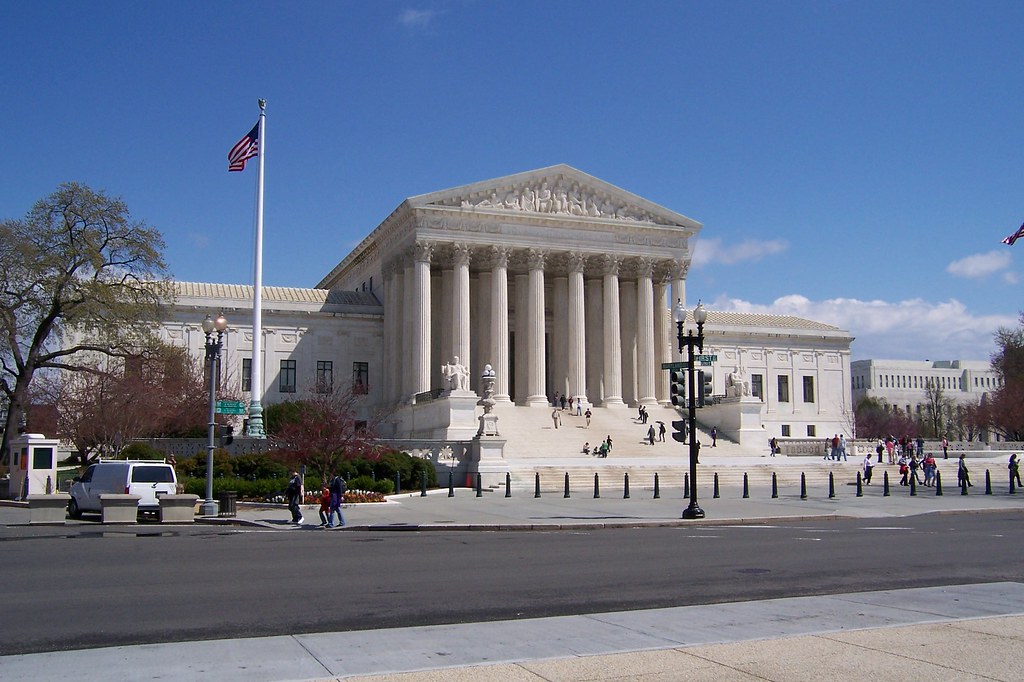Key Takeaways:
- Leading scholar Cass Sunstein warns that some justices fear a fight with the president.
- They hesitate to block controversial Trump policies to avoid a constitutional crisis.
- The Supreme Court uses its “shadow docket” to delay big decisions.
- Trump’s threats to ignore rulings could weaken the court’s power and trust.
Why the Supreme Court Feels Pressure
The Supreme Court faces its toughest test in decades. Cass Sunstein, a prominent law expert, believes some justices hold back on blocking Trump’s moves. They worry the president might refuse to follow their orders. In fact, this fear could push the U.S. into a major constitutional crisis.
Sunstein explained that the court’s right-leaning majority often claims legal reasons for keeping Trump policies alive. For example, they let federal agents profile people by race in immigration cases. However, he thinks another reason lurks beneath the surface. The justices know the president could say, “I decide how to enforce laws. The courts are not the final word.”
How the Supreme Court Might Avoid Clashes
Moreover, Sunstein says Chief Justice John Roberts and his colleagues feel trapped. They aim to be careful and avoid full rulings on hot topics. This tactic is called being “minimalist.” In other words, they decide as little as possible so they do not clash with the White House.
Sunstein warned that this minimal approach can look like fear. He even used the word “cowardice,” though he found it too strong. Still, he suspects fear guides many decisions. The court hopes to sidestep a fight that could shake the nation’s foundations.
What the Shadow Docket Means
The Supreme Court has a secret tool called the shadow docket. Through it, the court can leave policies in place without a full, public ruling. Critics say it lets Trump win by default. They argue this stealth method hides big legal choices from view.
Sunstein pointed out that each month the court delays ruling on unlawful actions, it shows more caution than justice. He thinks the justices worry about not being backed by the president. Consequently, they weigh politics as much as law.
Tariffs and a Test of Power
One key test involves Trump’s tariffs on foreign goods. An appeals court said the president lacks power to set these taxes. Instead, only Congress can decide trade rules. The Supreme Court will hear the case.
Sunstein admits he needs more study on this issue. Yet, he says the stronger legal view is against Trump’s tariffs. Even so, he fears the court knows “there will be hell to pay” if it rules against the president on this major policy.
Why This Could Lead to a Crisis
If Trump did refuse to honor a Supreme Court decision, the U.S. would face a full-blown crisis. No modern president has openly defied the highest court. Sunstein believes this standoff would threaten the balance of power.
Indeed, the last time the Supreme Court openly battled the executive was during the 1930s. Back then, President Roosevelt challenged the court’s New Deal rulings. That clash nearly tore apart the branches of government. We have not seen such tension in almost a century.
Sunstein’s Inside View
Cass Sunstein is no stranger to power. He worked in the White House under Barack Obama and knows top officials. He spoke from sources close to the Supreme Court, though he has no inside deal with any justice.
He also has ties to Elena Kagan, one of the court’s three liberal justices. In 2008, Kagan attended his wedding. Now she stands out as a voice of dissent against the six conservative justices.
Chief Justice Roberts: A Beacon of Hope?
Still, Sunstein holds hope for John Roberts. He admires Roberts and thinks he acts with integrity. Therefore, in “very extreme cases,” Roberts might choose law over politics.
Sunstein believes those extreme cases could arrive soon. If they do, he hopes the court will prove its power and independence. This moment would test whether the justices can stand up to a president who threatens to ignore them.
What This Means for You
For most Americans, these battles stay hidden in legal briefs and court chambers. Yet, their outcome can shape everyday life. From immigration to trade, Supreme Court rulings guide major policies.
If the court yields too much to the White House, it risks losing its role as a check on power. Conversely, if it stands firm, it may face a public fight that could reshape our government.
What’s Next?
The Supreme Court’s upcoming term will include major Trump cases. Watch for decisions on tariffs, immigration profiling, and presidential immunity. Each ruling will show whether fear or law guides the court.
In the coming months, listen for how justices address threats against their rulings. Their words may hint at who will back down and who will stand their ground.
Will the court remain a strong, independent branch? Or will it become a timid player in political battles? The answer could change American democracy.
Frequently Asked Questions
Why do justices fear a fight with the president?
Some justices worry that the president might refuse to enforce their rulings. This fear could lead to a clash between branches of government.
What is the shadow docket?
The shadow docket is a fast-track process the Supreme Court uses to make temporary decisions without full hearings. Critics say it hides major rulings from public view.
Can the court force the president to follow its decisions?
In theory, yes. But in practice, the court relies on the executive branch to enforce its rulings. A refusal by the president could spark a crisis.
How might a constitutional crisis unfold?
If the president openly defies a Supreme Court order, both sides could claim legal authority. This power struggle could paralyze the government and damage public trust.
